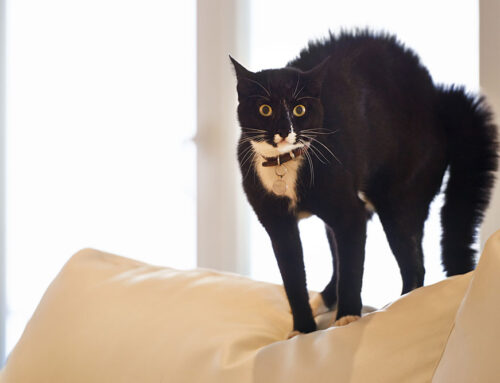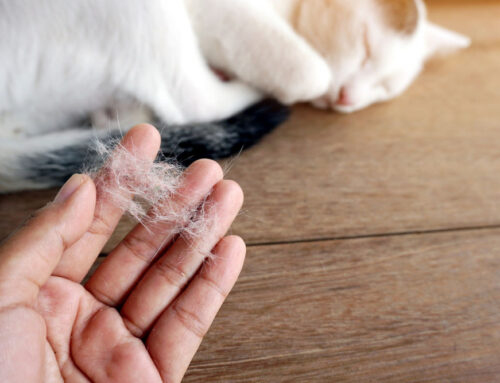Indoor felines don’t have the opportunity to roam the great outdoors, a trade-off that allows them to remain safe and sound in the house. However, indoor living can sometimes lead to behavior issues when cats are not allowed to practice their natural and instinctual behaviors. Our Wales Animal Clinic team understands the value of creating an environment that stimulates a cat’s senses, promotes physical activity, and nurtures their mental well-being. Set up the ideal home for your indoor cat by following our tips.
Provide vertical space for your cat
Cats are natural climbers and love to perch and survey their territory. Providing vertical space with cat trees, shelves, and window perches allows cats to climb and explore regardless of your home’s size. Vertical space allows your whiskered pal to act on their instincts, provides mental stimulation, gives cats respite from other household pets, and encourages exercise.
Engage in interactive play with your cat
Interactive play sessions mimic hunting and stalking behaviors and keep cats physically and mentally active. Toys that simulate prey, such as feather wands, laser pointers, or treat-dispensing puzzle toys, can provide your whiskered pal with hours of fun. To keep toys fresh and interesting to your cat and allow them to engage in various play styles, rotate their toy stash frequently.
Create hiding and resting spots for your cat
Cats are natural predators, but their small size also makes them prey animals. Hiding spots allow cats to retreat where they feel safe, which is essential to their well-being. Plus, anyone with cats knows how entertaining it is to see their feline friend shove themselves into a tiny box, basket, or other enclosed object. Provide cozy hiding spots using cardboard boxes, covered beds, your cat’s travel carrier, or tunnels that mimic their wild ancestor dens’ security.
Encourage your cat to scratch appropriately
Scratching helps cats stretch their muscles, mark their territory, and keep their claws healthy and sharp. By providing your cat with various scratching surfaces, such as sisal, carpet, or cardboard, they can choose their preferred surfaces. Encourage your whiskered pal to use scratching posts by placing them in home areas where the family congregates and by sprinkling catnip nearby. Use pheromone sprays on inappropriate scratching surfaces to help deter your cat by tricking them into thinking they’ve already marked that area.
Allow your cat safe access to nature
Cats who live indoors love to observe nature from their home’s safety. Bring the outdoors in by setting up window perches overlooking a bird feeder or garden. You can also create an enclosed outdoor area—a “catio”—for them to explore and experience the great outdoors. Remember that cats are territorial, so avoid letting your feline friend see or visit the outdoors if stray or feral cats roam nearby.
Establish a predictable feline routine
Maintaining a consistent daily schedule can help reduce stress and anxiety because cats thrive on routine and predictability. Establish regular feeding times, play sessions, and quiet times to foster your indoor cat’s sense of security. Keep your interactions with your whiskered pal consistent and positive—avoid forcing interactions your cat doesn’t want and allow them to decide when they’re done with an interaction.
Consider feline companionship

A cat can be happy as the only feline household member but can also live and thrive in a social group. If you’d like to establish a multi-pet household, choose a feline friend close in age and with a similar energy level to your current cat, or consider a calm, collected canine pal who won’t chase or harass your cat. Always introduce new pets gradually to avoid causing stress or injury.
Enriching your indoor cat’s environment to accommodate their natural behaviors helps to ensure their physical and mental well-being. Contact our Wales Animal Clinic team to schedule your cat’s next routine veterinary visit or to learn more about the importance of allowing cats to be cats.







Leave A Comment